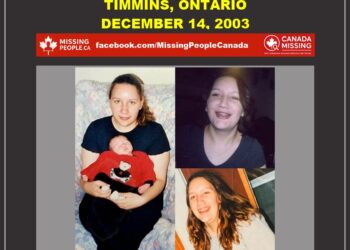When the body of Gravenhurst man Justin Evans was found in May 2021, it seemed all of Muskoka turned its attention to what happened to the 22-year-old, who had been missing for more than five months.
Questions about how missing persons cases are handled by Ontario Provincial Police in Muskoka, where 11 people remain missing, soon followed.
Six have disappeared from Huntsville, one from Novar, and four others from cities further south, who police believe were headed for Muskoka or ended up here somehow.
That is one of a myriad of factors complicating missing persons cases, leaving them at risk of falling though the cracks.
“There’s no formal missing person investigation training course,” said OPP Const. Lisa Rotar, with the Ontario Centre for Missing Persons and Unidentified Remains (OCMPUR).
“There are best practice guidelines that should be followed, but it’s up to each agency to enforce and adhere to.”
From the forms used to file a missing persons report — which are not standardized — to potential police bias, differing interview techniques, or the legacy of colonization that leaves Indigenous people — who go missing at higher rates — more vulnerable, Rotar said things get complex quickly.
In some cases, OPP issue news releases; in others, just a social media post.
“If we’re not all taking the same approach, we’re going to miss finding that person,” she said.
Rotar believes more people are missing than get reported.
As of Nov. 12, 2021, 1,670 people are missing in Ontario and 8,022 across Canada, according to the Canadian Police Information Centre, a tracking database used nationwide.
However, CPIC only tracks active cases and only if police register them there.






